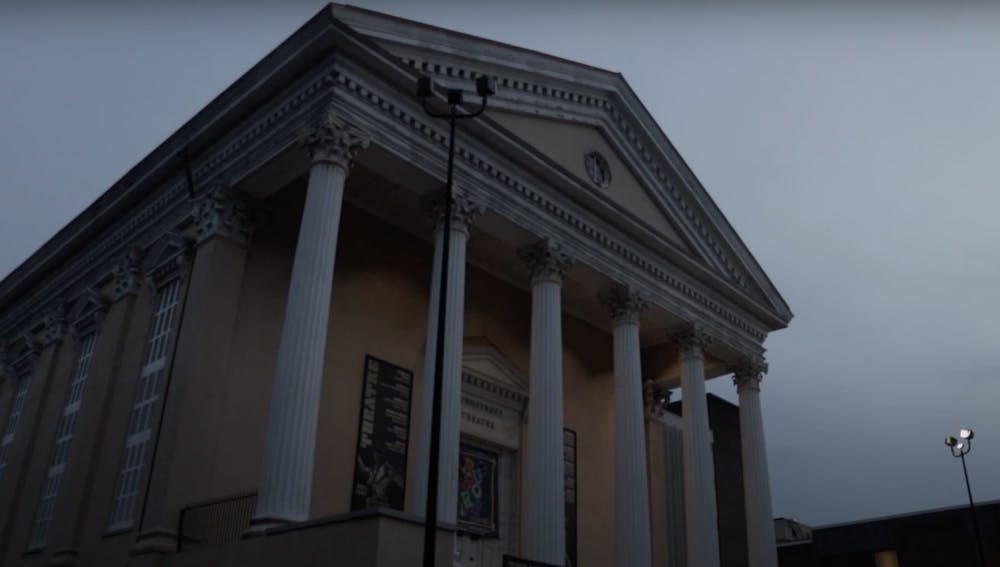Editor's note: This article was reported in collaboration with SGTV News 4's Finn Carlin. View SGTV's coverage, "The Haunted History of Longstreet Theatre," on YouTube.
Acting as a performance space and classroom for USC's Department of Theatre and Dance, Longstreet Theatre has a haunting past, with ghosts scaring students and faculty at every turn.
Constructed in 1855, Longstreet Theatre's grandiose staircase and architecturally complex columns make it an iconic part of campus but also one with a deep history.
First designated as a hall, auditorium and chapel, named College Hall, the building's poor acoustics made it difficult to house ceremonies.
The building was then converted into a hospital, with the basement serving as a morgue during the Civil War, making it a hub for otherworldly energy, according to a university website.
In 1888, it was called the Science Hall and contained several science departments and laboratories. In the basement, there was a gymnasium until 1939, when the Works Progress Administration funded the creation of an indoor swimming pool, reverting the name back to College Hall.
Longstreet did not get its current title until 1968, when it was named after Augustus Baldwin Longstreet, who served as the institution's president when USC was called the South Carolina College.
It finally became a theater in 1977, remodeling the structure into a theater in the round.
According to Lisa Gavaletz, the production stage manager whose office is located in Longstreet, some of the noticed ghosts are assumed to be Civil War soldiers.
While in the building at night, there have been accounts of hearing voices, noises out of the ordinary, suspicious creaks and even some seeing apparitions out of the corners of their eyes.
“This building is lovingly haunted,” Gavaletz, a USC theater professor, said. “I myself have seen things that have moved overnight. If I leave late at night and come in the next morning, there’s something that wasn’t quite there, and there doesn’t seem to be any explanation as to why.”
Gavaletz said there are students who have witnessed a ghost-like figure wearing a flowing white shirt and wandering about the theater at night. Students have also claimed to have a chill come over them at inexplicable moments while attending class in the basement.
Another active spot, according to Gavaletz, is the grid located in the main performance space. At the grid, people have described, on numerous occasions, hearing sounds up beyond the average creak.
Hoping to foster a positive relationship with the spirits, Gavaletz says “goodnight, ghosties” when she leaves the theater after a late-night rehearsal.
Cody Markow, a second-year international business student and university ambassador, said he experienced something spooky. Once, he was hanging up posters for an event at night, and as he and his friends made their way throughout the building, they would turn off the lights. Mysteriously, as they made a second-round, all of the lights were switched back on.
The ghosts, whether real or not, seem to be mischievous rather than a sinister poltergeist, only creating minor inconveniences for those who come in contact with them.
“I think, deep down, I would like it not to be true,” Markow said. “But I also would also say some of it is kind of hard to deny. It might be more real than you think.”
To get the Columbia area into a Halloween spirit, University Ambassadors offered ghost tours focused on supposedly haunted stories of USC on Oct. 26. One of the stops on the tour included tales of Longstreet Theatre and its basement. Greyson Carraway, second-year elementary education student and university ambassador, said people get very excited learning about the building and its dark past.
“I love that this building has a history. It’s a bit of a regrettable history, but it is history," Gavaletz said. "It is interesting to get to work in a building that has that history, that background, that experience that we know has been around for such a long period of time; and people had very deep experiences here."

